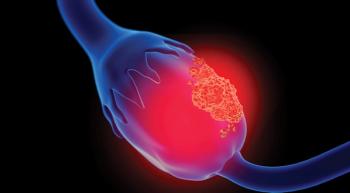
When Less Is More in Bladder Cancer Treatment
Some patients eligible for bladder surgery due to cancer may safely opt to preserve the organ.
For patients, one of the most worrisome side effects of treatment for bladder cancer may be the removal of the organ, making it necessary for doctors to create a urostomy, an opening in the body that drains urine into a bag.
That’s one reason for research considering ways to treat urothelial carcinoma, the most common type of bladder cancer, without removing the bladder in certain patients. The goal is to improve long-term quality of life without compromising oncologic outcomes, according to Amy N. Solan, M.D., an assistant professor in the department of radiation oncology at NYU Langone Health in New York City. Bladder preservation may be a reasonable approach for patients who are not candidates for surgical removal of the organ — a procedure known as cystectomy. This alternative approach is particularly appropriate for patients who are older or are current or former smokers. Furthermore, many patients would simply prefer the less invasive procedure, Solan said in a presentation at the 2018 OncLive® State of the Science Summit™ on Genitourinary Malignancies.
Quality of life was evaluated in an analysis of organ conservation in invasive bladder cancer through removal of just the tumor, chemotherapy and radiation. The analysis showed that most of the patients who kept their bladders maintained normal bladder function and had low rates of urinary incontinence and bowel symptoms.
WHO IS ELIGIBLE?
Data on the safety and efficacy of bladder preservation have come from single-institution studies in the United States and Europe, as well as phase 2 trials from the Radiation Therapy Oncology Group. Although it is difficult to collect unbiased information, Solan said, bladder preservation outcomes in selected patients appear comparable with those of people who undergo organ removal, with half of patients or more surviving five years and about 70 percent of these patients maintaining an intact bladder during that time period.
Solan emphasized that patient selection is key when bladder preservation is being considered in surgical candidates. Those eligible have cancer that has grown into the bladder wall or the tissue surrounding the organ but not into lymph nodes. Although many studies include patients with disease that has spread further into the genitourinary tract, this group is often underrepresented, Solan said.
METHODS UNDER CONSIDERATION
Patients who should not be considered for bladder preservation are those with diffuse, stage 0 disease that’s difficult to remove surgically; those whose cancer location makes more extensive surgery difficult; or those with hydronephrosis (kidney swelling due to inability to drain urine), a well-known indicator of a poor prognosis. A lack of sufficient study leaves questions about the eligibility of patients with rarer variations of bladder cancer: adenocarcinoma and squamous cell.
The current standard treatment for muscle-invasive bladder cancer is radical cystectomy, meaning the removal of the bladder and lymph nodes on both sides of the pelvis. Platinum-based chemotherapy and radiation are given before the surgery.
Although a number of trials have evaluated the role of chemotherapy, the order in which treatments are given, and radiotherapy volume or dosage, the optimal bladder-sparing approach has not been identified, Solan said.
In her presentation, she discussed bladder preservation accomplished by removing just the tumor, followed by chemoradiation.
This more minimal surgery is conducted via a scope inserted through the urethra.
Patients with additional medical conditions or poor renal function who want to preserve their bladders might benefit from regimens that include chemotherapies meant to sensitize the cancer to radiotherapy, such as capecitabine, paclitaxel, paclitaxel/ carboplatin, 5-fluorouracil/mitomycin C and gemcitabine, she said.
Another preservation approach involves temporarily stopping chemoradiation to allow for a cystoscopy, a test that checks the health of the bladder lining. Radiation Therapy Oncology Group trials have shown that, in 70 percent of patients, cytoscopy reveals a complete response to the initial courses of chemoradiation, an outcome associated with improved five-year disease-free survival, Solan noted.
However, midcourse cystoscopy has been a topic of debate. Proponents argue that an early cystoscopy lets clinicians identify patients who are not responders and refer them to salvage cystectomy. On the flip side, Solan said, other trials have shown that delaying part of the radiotherapy course decreases local cancer control rates.
TAKING A RISK
Other preservation approaches include hypofractionation (large doses of radiation given over a relatively short time frame) and immunotherapy combined with radiation therapy. In addition, combination chemotherapy and radiation can be an alternative to bladder removal. A 2016 review of studies investigating this technique found that it generated “favorable disease-specific survival and bladder preservation rates,” according to its authors.
Following bladder preservation, 20 to 30 percent of patients will be found to have residual tumor when checked for restaging of their disease, and the same percentages of this group will develop new or recurrent disease in the bladder. Patients with muscleinvasive bladder cancer that resists treatment or has recurred will need to undergo a salvage cystectomy.
“It is important, when a patient is going to undergo bladder preservation, that they understand that salvage cystectomy may be a part of the equation,” Solan said.





